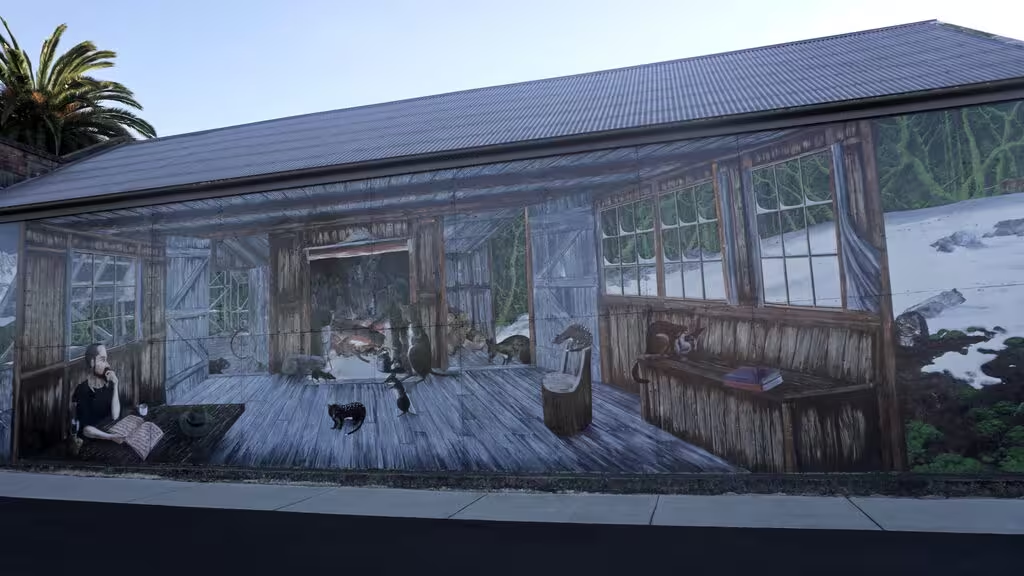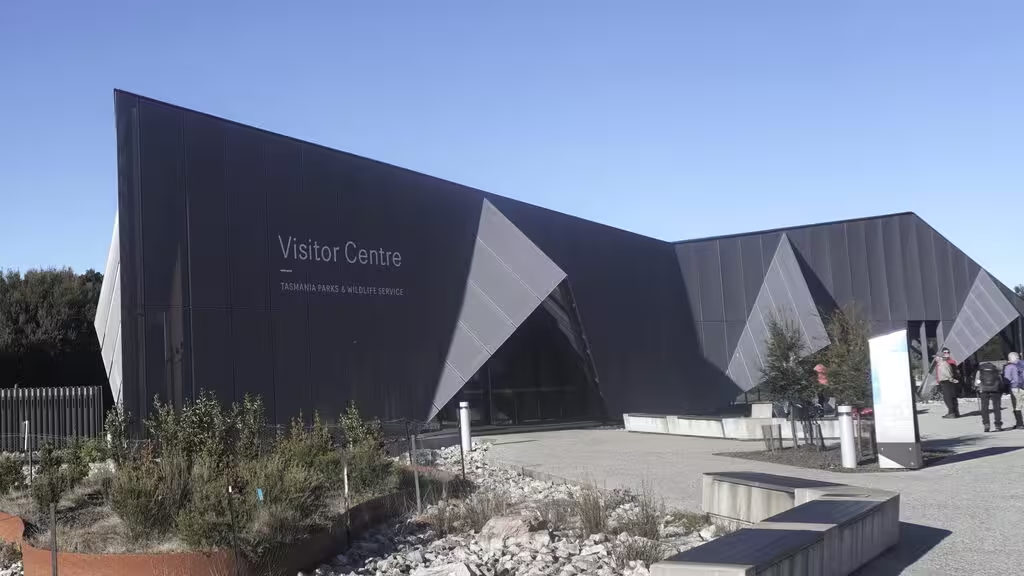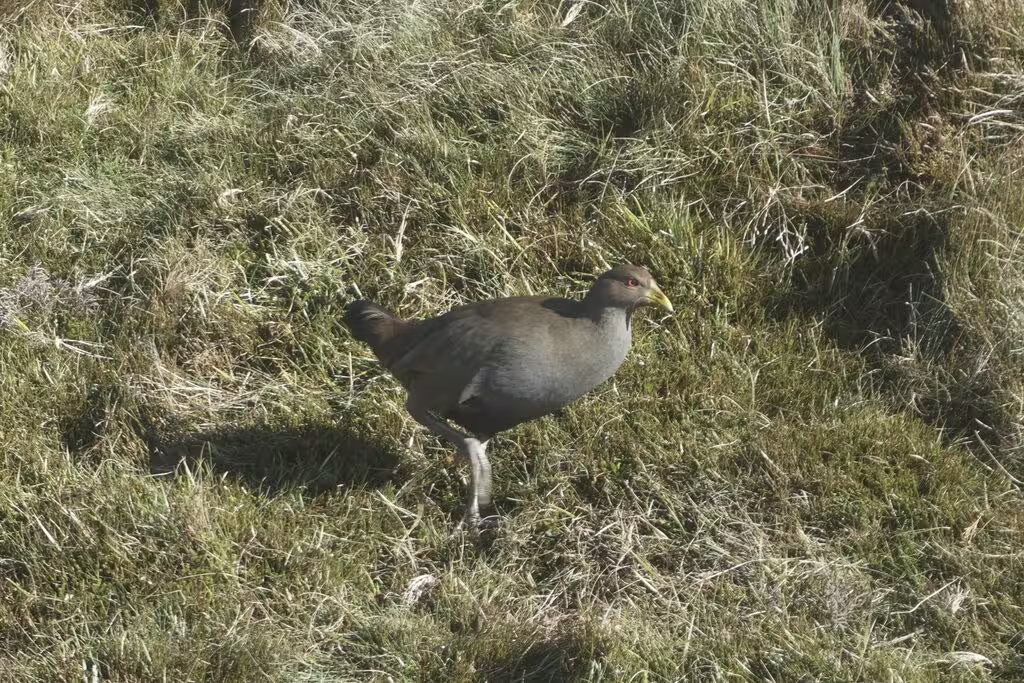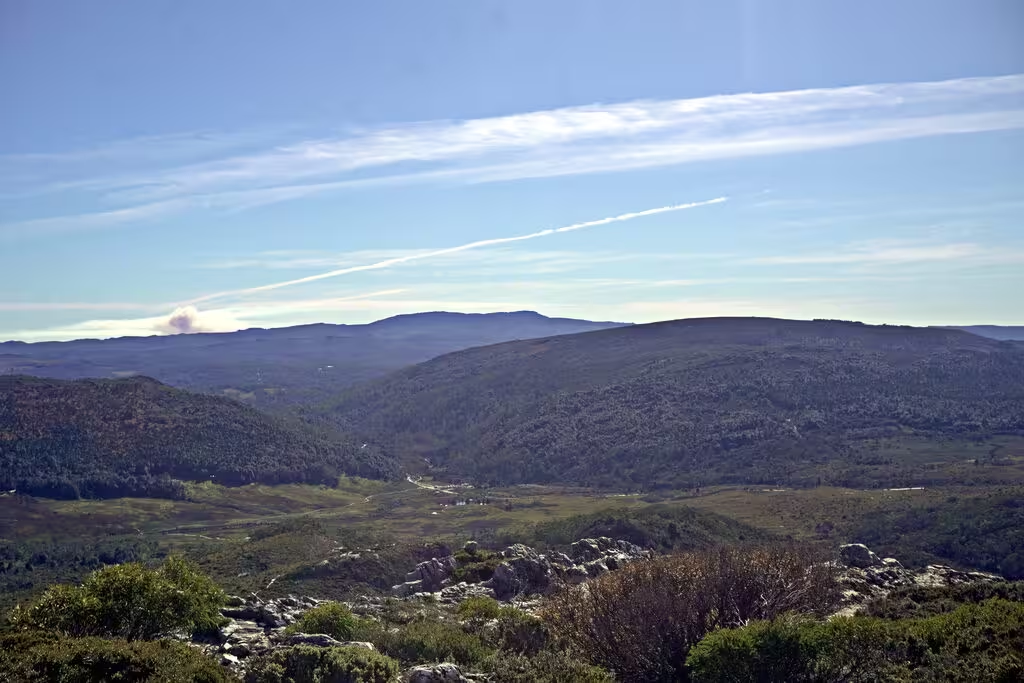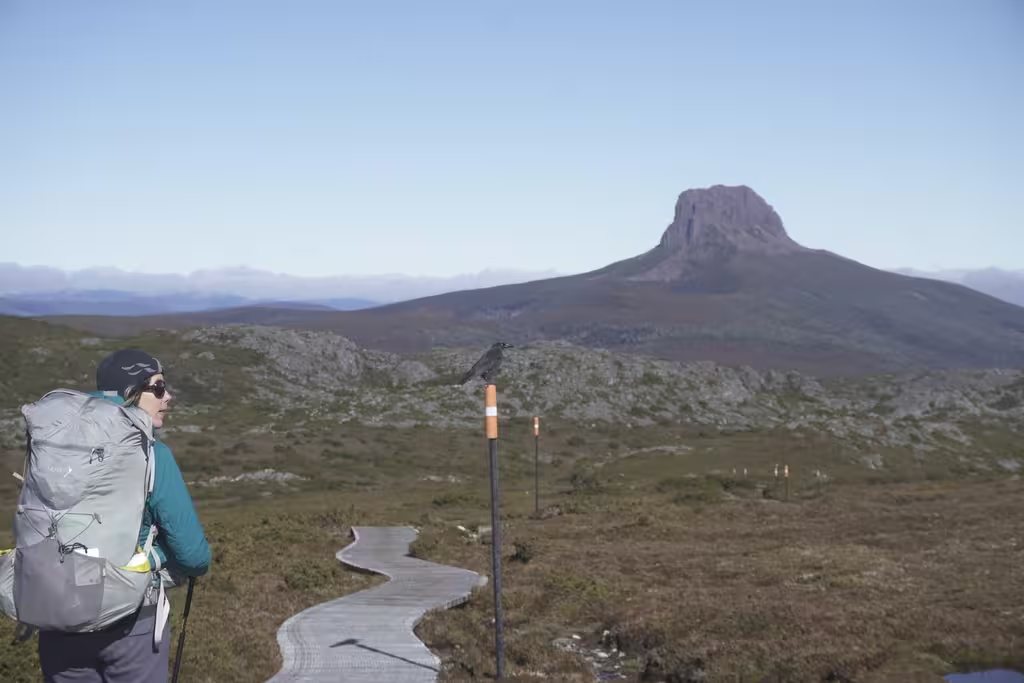TR Navigation
Other parts of this trip report:
- Part 1: Australia versus New Zealand
- Part 2: Before the walk [Melbourne photos, Hobart, Launceston]
- Part 3: Overland Track day 1, Cradle Mountain [photos]
- Part 4: Overland Track day 2, Windermere [photos]
- Part 5: Overland Track day 3, Pelion [photos]
- Part 6: Overland Track day 4, Kia Ora [photos]
- Part 7: Overland Track day 5, Bert Nichols [photos]
- Part 8: Overland Track day 6, Narcissus [photos]
- All Overland Track photos
Track Transport: Launceston to Cradle Mountain Visitor Centre
We’d pre-packed our gear to load onto the van the night before, so we got up just before our pickup time and sat outside our hotel in the dark. Eventually the van and trailer showed up and we got on the 6:30AM Launceston to Cradle Mountain service by Overland Track Transport, which (after quite a bit of research) was the best bet for daily shoulder season transport (i.e. May). Fully endorsed.
An hour later, we stopped in the town of Sheffield, with the murals, and a cafe. I ate my leftovers from my enormous chicken parm from the night before. (The driver mentioned that Sheffield’s mural initiative was inspired by a town in Canada; I think that town is Chemanius on Vancouver Island, which I’ve never been to.)
The shuttle has a bunch of last-minute gear for sale (gloves, lightweight daypacks, etc) and, indeed as promised, a knowledgeable driver. We also had a new Overland Track Transport staff member along for the ride. Good dawn views along the road.
Two hours after leaving Launceston, we got to the Cradle Mountain Visitor Centre, where we checked in with the park and got a safety briefing (nothing surprising to us, but I guess they get all kinds). There were videos of all sorts of weather conditions that we did not experience.
The trailhead is not at the Visitor Centre, so we took the shuttle bus to Ronny Creek. Non-Overland Track hikers have to pay for the shuttle bus? Anyway, there were some of us hikers and then a bunch of non-Overland Track hikers, which is the only way it can work if there are going to be departures every 15 minutes and only 34 independent hikers (plus 26 guided) a day.
We would be lucky throughout the whole trip with bluebird days throughout. There are reports of snowstorms in late December/early January near the solstice, but May can be clear. There was supposed to be rain coming in after we left.
Overland Track Day 1: Ronny Creek to Waterfall Valley
Between pulling the gear off the shuttle bus and starting to walk was a good time to have some snacks. It turns out that the currawong have clued into this, and one cheeky currawong tried to fly away with a bag of chips. Unfortunately for that bird/fortunately for Hanna, the chips were too heavy for it.
The track starts out well-marked, on boardwalk, across the buttongrass moorland. We also saw a Tasmanian nativehen near the start of the track. No other species for me that day.
The first day has the biggest distance and elevation numbers for sure, though the boardwalk makes the terrain easy. Still, day 1 is the day with the heaviest packs, and I wasn’t used to walking with my Aarn pack, so I did twist my ankle twice when it was just a bit rocky. I should get it adjusted again. But it turns out that the Overland Track has 4 of the 6 days estimated at about 3-4 hours for average walkers, with much of the difficulty in the side trips. NZ Great Walks side trips are short, like 1-2 hours. Not these!
After the moorland, we ascend and walk right next to Crater Lake, with a view of Dove Lake from Marion’s Lookout (about 450m ascent from the trailhead total). I got a picture of the moonrise and a waterfall well before Waterfall Valley.
There are plenty of non-Overland Track hikers all the way to the Cradle Mountain summit. The park doesn’t really want non-Overland Track hikers beyond that, until Kia Ora Hut, and we didn’t see any more day hikers. We did encounter a couple of new people walking more quickly/slowly than the usual rate, though.
Cradle Mountain becomes prominent especially past Marion’s Lookout, and the view with the mountain and the lakes is super scenic. Because of the bluebird weather, we could see all the way back to the Ronny Creek start, as well as ahead to Barn Bluff.
Cradle Mountain Summit
Aside from cairns and a boatshed, the first structure that one encounters on the Overland Track is Kitchen Hut. Not allowed to sleep there except in case of emergency, but can leave bags inside, safe from currawong attacks. Also the first toilet after the carpark.
From the hut, it looks like one can see the way up Cradle Mountain, which is 300m of extra ascent/descent, and estimated at 2-3 hours return. Indeed, it took me about 2.5 hours. MP got pretty close to the top, but we forgot to bring snacks, which was a problem. There is definitely some scrambling required, not visible from the base, but the rock is really grippy. Although I wasn’t alone on the summit, there wasn’t really heaps of people either. Maybe 10 at the most when I was there, and more like 5. I enjoyed the views for a bit and then headed back down.
Benson Peak, Barn Bluff view, and the Waterfall Valley hut
After a toilet break back at Kitchen Hut, we continued towards Waterfall Valley Hut, with 2 hours until sunset. The next mountain one passes underneath is Benson Peak, which is shaped similarly to Cradle. From Cradle, one can also see Barn Bluff, which is with us for quite a while, though I didn’t quite manage to ID it for a while.
One notable structure is a spaceship-like emergency shelter. I did not go inside. The weather can get bad, I read.
Barn Bluff would be challenging on day 1 with the short days in May. Doable in January, though it would still be a long day. Better on day 2, but we decided that we’d take it easy on day 2. Many people did leave early from Waterfall Valley, backtracked half an hour, climbed Barn Bluff, and then did the rest of the day 2 walk.
We arrived at the Waterfall Valley hut at 5:30pm, right around sunset. MP saw a wallaby near the hut; I missed it. I did also do some night photography later. I observed another hiker who had had a shoe disaster. Apparently in Australia’s dry climate, unused shoes delaminate, thus ending one’s hike.
